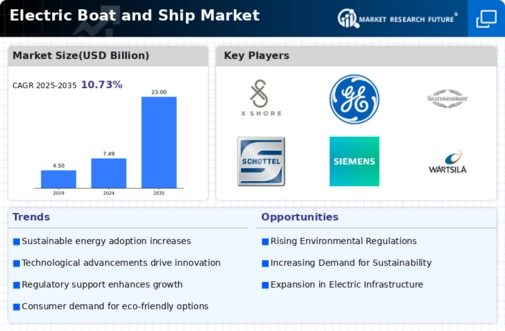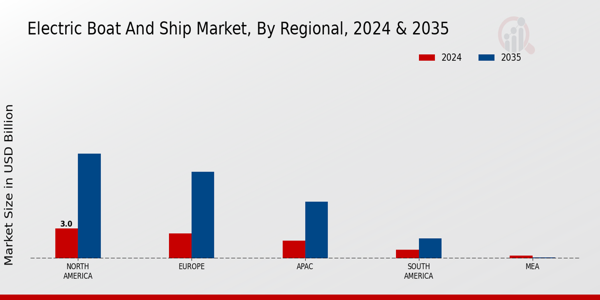The Global Electric Boat and Ship Market has seen a significant transformation over the past years, driven by a combination of technological advancements, increasing environmental regulations, and a heightened awareness among consumers about sustainable practices.
With a growing number of players entering the market, competition has intensified, resulting in innovative designs and improved efficiencies in electric marine vehicles. Key players in the industry are focusing on enhancing their product offerings by integrating cutting-edge technology such as battery management systems, electric propulsion systems, and smart connectivity features.
This competitive landscape showcases a diverse range of manufacturers, each striving to carve out their niche while responding to consumer preferences for cleaner, quieter, and more eco-friendly maritime transportation solutions.
X Shore has emerged as a formidable competitor within the Global Electric Boat and Ship Market due to its strong presence and commitment to innovation.
The company prides itself on its ability to blend cutting-edge technology with sustainable design practices, offering a unique approach to electric boating. X Shore is recognized for its high-performance electric boats that deliver a seamless experience while minimizing environmental impact.
The company’s investment in advanced research and development allows it to continuously refine its product lineup, ensuring that it meets the evolving needs of consumers.
With a firm focus on quality and customer satisfaction, X Shore has managed to establish a solid brand reputation, leveraging its strengths in design, engineering, and an understanding of market trends to maintain a competitive edge in the industry.
Energica Motor Company, primarily known for its electric motorcycles, is also making strides in the Global Electric Boat and Ship Market, illustrating the growing intersection between electric vehicle technology and marine applications.
Although the company initially focused on two-wheeled electric vehicles, Energica's expertise in electric powertrains and battery technology positions it favorably within the maritime sector. The firm's commitment to performance and sustainability resonates well with the current market dynamics where consumers are increasingly prioritizing energy-efficient and environmentally friendly alternatives.
Energica's strategic approach to harnessing its electric vehicle heritage allows it to innovate in boat technology, where its engineering prowess can lead to the development of powerful, reliable, and eco-conscious marine products aimed at capturing a unique segment of the market and driving the transition toward electric mobility on water.






















